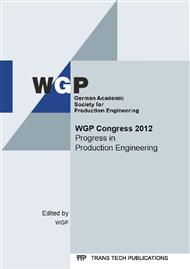p.277
p.291
p.299
p.309
p.321
p.329
p.349
p.365
p.379
Flexible Automation for the Production of Stators and Rotors of Electric Vehicles
Abstract:
The increasing electrification of the drive train will - sooner or later - lead to significant changes in the value chains for vehicle manufacturers and suppliers, while sales potentials are still uncertain. Due to the currently small number and high diversity of industrial electric motors with higher power and the complex handling of the necessary materials, the processes are based on manual labor content. For the automotive industry high volume production concepts for electric traction motors will be required in the future. Thus, the importance of automated assembly and manufacturing technologies for electric motors moves into focus. In the production of electric motors e.g. the wiring processes of the stators and the magnet assemblies for permanent-magnet synchronous rotors show potential for further process rationalization. This paper presents alternative approaches for the automation of wiring and magnet assembly processes developed at the Institute for Factory Automation and Production Systems (FAPS) at the Friedrich-Alexander-University of Erlangen-Nuremberg.
Info:
Periodical:
Pages:
321-327
Citation:
Online since:
April 2014
Authors:
Price:
Сopyright:
© 2014 Trans Tech Publications Ltd. All Rights Reserved
Share:
Citation:


